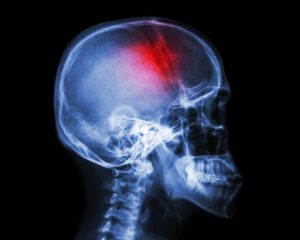
An arteriovenous malformation (AVM) is a tangle of abnormal blood vessels. Usually present at birth, an arteriovenous malformation can occur anywhere in the body. When they occur in the brain or brain stem, the ramifications of a rupture and hemorrhage could include an arteriovenous malformation acquired brain injury (ABI). When an AVM ruptures, the bleed can lead to an aneurysm or stroke. The aneurysm or stroke can cause brain damage by preventing adequate blood flow to certain areas of the brain.
AVMs are not always problematic. They do disrupt proper blood flow, but there are not always obvious symptoms. Many people do not know they live with one. However, they can cause symptoms especially if they rupture and bleed.
AVMs Can Cause Serious Brain Injuries
In most cases, the arteriovenous malformation is present at birth. While there is some disruption in the blood cycle, it is not often noticed until something causes the tangle of arteries and veins to rupture and hemorrhage. This causes bleeding into the brain. This is damaging enough, but it also sometimes leads to aneurysms, strokes, and seizures. Any of these emergency medical concerns can also cause an acquired brain injury.
To prevent serious complications including brain injuries, it is imperative that doctors identify AVMs quickly and take action to remove them or treat them. About 75 percent are operable, but this does little good if it is not diagnosed until after more significant health concerns develop.
Signs of a Ruptured Arteriovenous Malformation and ABI
Often, there are no signs or symptoms of an arteriovenous malformation. When ruptures are small, there may be no noticeable signs or symptoms. When bleeds are more severe, however, it is hard to ignore the warnings. Patients may experience:
- Seizures
- Language problems
- Muscle weakness or paralysis
- Loss of coordination and dexterity
- Hallucinations
- Problems with mobility
- Unexplained, spontaneous pain
- Difficulties with focus and concentration
- Dizziness and confusion, feeling “dazed”
- Headaches
- Sudden-onset dementia
- Visual disturbances including double vision
- Numbness or tingling
- Issues with short-term memory
If a stroke occurs because of the bleed, the patient may lose consciousness or experience additional physical, cognitive, and emotional symptoms. These may include muscle weakness or paralysis on one side of the body, slurred speech, or lack of coordination. Massive strokes or aneurysms can lead to death in only a few minutes. Those who survive may suffer from lasting impairments.
Treatment and Rehabilitation After an AVM and ABI
AVMs on their own may be candidates for surgical removal. Doctors may prescribe blood thinners or other medications if surgery is not an option. When it comes to the resulting ABI, continuing care is more complicated. Some people require very little therapy or rehabilitation to return to their previous lives. They recover within weeks and head back to work.
Most require at least some level of therapy and rehabilitation, especially if they suffered a stroke. They may attend therapy to rebuild strength and regain skills they lost. This therapy could include:
- Physical therapy
- Cognitive therapy
- Occupational therapy
- Speech therapy
Outpatient therapy may be enough to help them relearn as many skills as possible, adapting to any lasting impairments and learning to live independently again.
Others require inpatient rehabilitation. These programs allow them to receive different types of therapy around-the-clock. These therapies are intensive and may focus on single skills, like relearning how to walk, talk, or provide self-care.
In the most severe cases, those who suffer massive strokes may never fully regain consciousness. They require around-the-clock care. This may require an in-home nurse, moving into a nursing home, or another long-term facility placement.
AVMs, ABIs, and Civil Suits for Compensation
An arteriovenous malformation is typically a congenital malformation that causes few problems. The tangle of blood vessels itself is unlikely to support a medical malpractice claim or other negligence suit. However, if your doctor failed to diagnose your AVM and you suffered a brain injury or even a stroke, you may have grounds for a solid case.
For example, imagine you began suffering seizures. You went to the emergency department of your local hospital, and the doctor on duty failed to run the recommended medical scans to rule out AVM as the cause. Several days later, your undiagnosed AVM ruptured leading to a brain bleed and a stroke. You suffered a moderate ABI and now must relearn to talk and feed yourself.
We may be able to hold the doctor and hospital responsible. Let us review your case and determine if negligence played a role. The brain injury lawyers from Newsome | Melton have more than 20 years of experience handling these cases. We will protect your rights and fight for the compensation you deserve.
